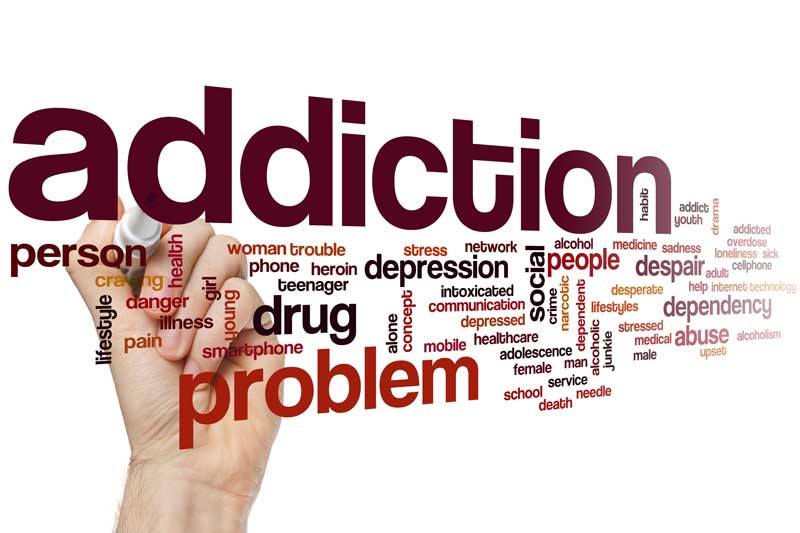The State of Addiction

Here in Pennsylvania, Act 54, was put into law in October of 2018. The law, Act 54, comes in reaction to the increasing number of drug-exposed babies born in Pennsylvania. In 2016, the PA Department of Health reported 3,897 babies exposed prior to their birth.
According to the new law, health care providers must notify the state about any newborn or child younger than 1 when one or more of the following determinations are made:
State by state, the stigma of addiction and how we treat it is changing. Mid-year, 6 states are either celebrating the victories or waiting for final confirmation on laws designed to treat the patient first.
Pennsylvania
The child is born “affected by” substance use by the mother;
The child experiences withdrawal symptoms from prenatal drug exposure, such as the neonatal abstinence syndrome (NAS) effects experienced by babies exposed to opioids; or
The child suffers from fetal alcohol spectrum disorder.
After the state is notified about a drug-exposed newborn, a multidisciplinary team staffed by several different agencies would be convened to immediately assess whether child-protective custody or other services would be warranted. They must then develop a “safe care” plan for babies who are sent home that could include the involvement of public health agencies, child protective services or other systems.
Wolf’s signing of Act 54 comes after his second renewal of the opioid disaster declaration first introduced in January 2018. In his first declaration, Wolf introduced initiatives to increase access to treatment and enhance the coordination of health and public safety agencies.
Colorado
HB 19-1269 has been signed into law. It removes prior authorization for addiction medications and establishes mental health parity compliance procedures.
New York
Assembly Bill A2904 removes prior authorization for FDA-approved addiction medications, making it easier for patients to access science-based treatment without extra hoop-jumping. The bill has passed both the Assembly and the Senate and is awaiting the Governor’s signature.
Connecticut
House Bill 7125 establishes state compliance with federal parity laws, and eliminates some access limitations for both naloxone and addiction medications. This bill has passed both houses and is awaiting the Governor’s signature.
Texas
House Bill 3285 includes a provision eliminating prior authorization on some addiction medications in the state Medicaid program. It also includes a continuing education requirement for doctors who prescribe opioids, a training requirement for college residential advisors, a statewide public awareness campaign, and a naloxone access grant program. This bill was passed by the legislature and signed into law by the Governor.
Missouri
House Bill 904 has a few key elements:
• It prohibits prior authorization, step therapy, and annual and lifetime limits for all FDA-approved addiction medications in commercial health insurance plans. It also requires that these meds be placed on the lowest cost-tier formulary.
• It requires the state Medicaid plan to include all of the FDA-approved medications on the preferred drug list.
• It also requires that all treatment programs disclose which medications they offer and their level of certification by an independent body about their standards of care.
This bill was included as part of SB 514, and it has passed through the legislature. It awaits a signature from the Governor.
California
Senate Bill 235 establishes much-needed licensing procedures and care standards for outpatient addiction treatment programs. The bill has passed the Senate and is awaiting action in the Assembly.
Things on Capitol Hill are moving too. There is currently a bill on the table that enables full funding of the Loan Repayment Program for the Substance Use Disorder Treatment Workforce ($25 million) and the Mental Health and Substance Use Disorder Workforce Training Demonstration Program ($10 million), which has been approved in the House and is pending action in the Senate.
According to the recent data from the Centers for Disease Control and Prevention, 11 states — including California, Pennsylvania and Texas — have reported that opioids were involved in fewer than half of their total drug overdose deaths in 2017.
Inside an elementary school classroom decorated with colorful floor mats, art supplies and building blocks, a little boy named Riley talked quietly with a teacher about how he had watched his mother take “knockout pills” and had seen his father [inject drugs] “a thousand times.”
Also, the federal cash infusion is guaranteed for only a few years, which throws the sustainability of the states’ efforts into question. Drug policy specialists say the money may not be adequate to improve the mental health care system. And more focus is needed on answering the underlying question of why so many Americans struggle with drug addiction, they say.
So, I am just going to leave you with this article I saw published in the New York Times. Inside the Elementary School Where Drug Addiction Sets the Curriculum.
Riley, who is 9 years old, described how he had often been left alone to care for his baby brother while his parents were somewhere else getting high. Beginning when he was about 5, he would heat up meals of fries, chicken nuggets and spaghetti rings in the microwave for himself and his brother, he said. “That was all I knew how to make,” Riley said.
Riley — who is in foster care and who officials asked not be fully identified because of his age — is among hundreds of students enrolled in the local school district who have witnessed drug use at home. Like many of his classmates at Minford Elementary School, Riley struggles with behavioral and psychological problems that make it difficult to focus, school officials said, let alone absorb lessons.
Current Efforts on Capitol Hill:
1. An effort to provide more certainty for State Opioid Response Grants by extending the program for five more years (H.R. 2466, the State Opioid Response Grant Authorization Act)
2. The John. S. McCain Opioid Addiction Prevention Act (S. 724/H.R. 1614) to limit initial opioid prescriptions for acute pain to seven days.
3. Legislation that makes it easier for medical providers to prescribe buprenorphine for addiction treatment, without excessive requirements that restrict access (H.R. 2482, the Mainstreaming Addiction Treatment Act).
4. The Fentanyl Sanctions Act (HR 2483/ S 1044) to make trafficking of fentanyl to the U.S. more difficult.



